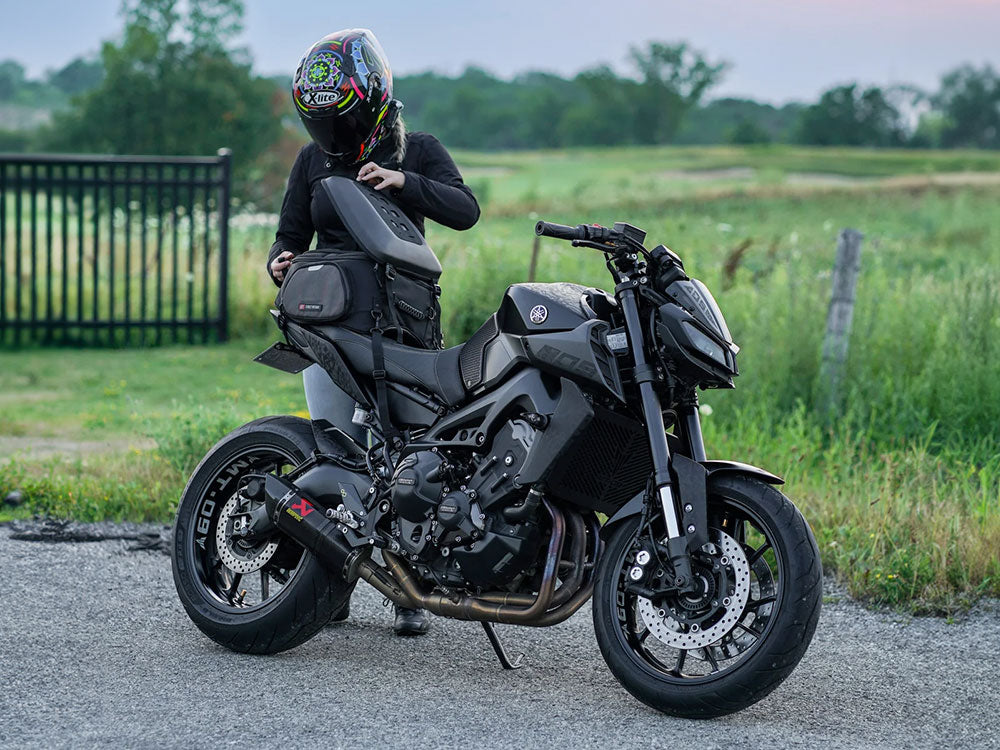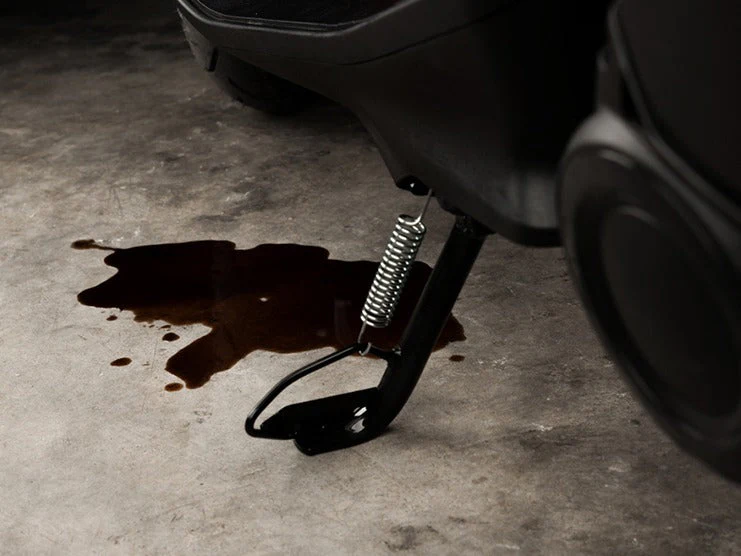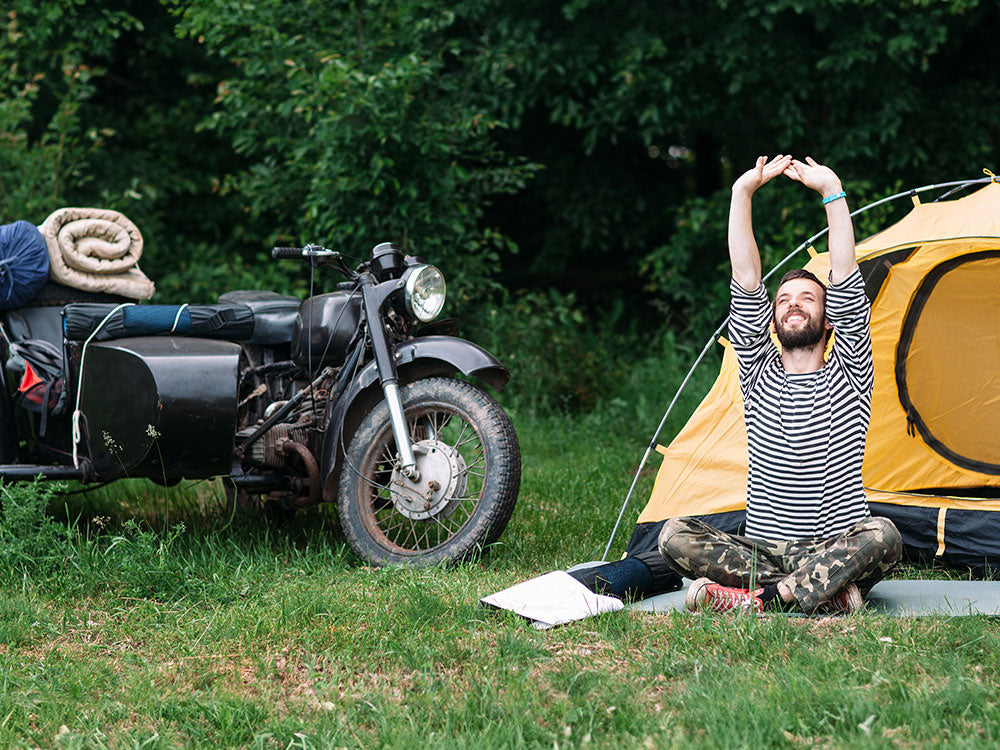When going on a motorbike tour, it is best to pack light. Overpacking can cause your motorbike to become overweight and handle poorly. Nothing is worse than having heavy saddlebags dragging down your motorcycle.
This article provides a comprehensive guide on what to carry on a motorcycle tour, how to pack properly, and the benefits of packing light.
Table of Content

1. Decide What to Bring
1.1 Clothes
Try to bring lighter clothes when going on a motorcycle trip. Although wool and heavy clothing will keep you warm, they have the disadvantage of being thick and heavy. Synthetic materials like nylon and polyester are considered lightweight fabrics. Although cotton, linen, and cotton are a little heavier than other materials, they are still considered lightweight materials.
Instead of putting on bulky sweatshirts or pants, wear synthetic fleeces and base layers that are lightweight and moisture-wicking.
Do not pack everything you want; only bring what you need. Even if your trip is longer than a week, you only need to bring enough clothes to last one week.
Find a laundry or laundromat service, or wash items by hand in a sink or bathroom at a temporary abode.
1.2 Layering
Are you going somewhere cold? Bring thin layers rather than thick sweaters. Fabrics like synthetic blends or merino wool are good examples of performance clothes since they have good breathability, cause wrinkles, and can dry quickly. If you must take a jacket, bring an ultralight down jacket that can be packed tightly or a lightweight rain jacket. You can also wear a thick fleece or jacket while riding the motorcycle if you must bring one.
1.3 Shoes
Ballet flats and other lightweight shoes may not provide enough support for long walks. Make sure you have a pair of shoes that are heavy enough to protect your soles when walking on dirt or gravel but do not weigh down your luggage and motorcycle when traveling. Your shoes should be suited for different terrain unless they are designed for special events.
1.4 Toiletries
It is easy to find toiletries at shops and stores along the sides of the road you travel. Additionally, most roadside hotels provide at least complementary soap and shampoo. If you prefer to bring your own, store them in travel-sized bottles that are less than 100 ml.
Solid toiletries are a good alternative since they are more durable and can be broken up into smaller pieces. Additionally, they won't accidentally open and spill inside your bag.
Consider using a bar of body moisturizer, a deodorant stick, or a bar of soap instead of shower gel, and solid shampoo and conditioner instead of the liquid versions.
1.5 Tools
Though the hope is you will not have to make roadside repairs, you should always carry a few basic tools to make quick fixes and maintenance.
Every rider should possess a functional toolkit with tools in good condition before you head out. Additionally, make sure you have equipment like plug spanners and wheel spindle spanners. You might need to buy a small set of Torx keys since most models are fitted with Torx bolts.
Essential motorcycle tools include zip ties, rubber gloves, a tiny roll of gaffer tape, bolts, washers, and fasteners.
Make sure your tools are in a secure and safe bag that you can access without having to empty your bag of its contents.
1.6 Fluids
Bring the necessary fluids needed to help your motorcycle run, but don't put them in heavy bottles. Purchase travel bottles from a pharmacy to fill with engine oil, brake fluid, and clutch fluid while traveling. Chain lubricant is available in small tins and will help lubricate your drive train.
1.7 Cover and Lock
You'll need to leave your bike at a parking space if you stay overnight at a hotel or a similar establishment. Locks and covers will help secure your bike. Ask first if there is a more secure place out of the way and less noticeable than leaving your motorcycle in a parking lot.
If not, lock your bike in place using chains and padlocks you provide, and try to leave your motorcycle in a place as far away from any entry points as possible.
Bring out a portable cover and place it over the entire motorcycle. If it rains overnight, this will keep your motorcycle from getting wet and make the vehicle less noticeable.
2. Spread the Load
You may need luggage bags of different sizes to hold all the gear you will need for the trip. You can choose from fender packs, roll tubes, tank bags, backpacks, etc.
When deciding what equipment to pack and where to place it, try to be practical. Instead of carrying heavy gear in a backpack, heavy objects like chains and tools should be placed at the bottom of large bags and kept near the seat or the fuel tank.
Put lightweight clothing and other soft belongings in your backpack to help cushion your fall should you crash. Make sure to ride a short distance with the same backpack to gauge how comfortable it feels on the road. To keep the bag close to you and evenly distribute the weight, it should feature a waist and a chest strap.
3. Packing Using Zone
To maximize storage space, you must arrange your belongings in your backpack once you have decided what to bring. Your belongings may jut into your back when walking, or poke a hole through the bag if your belongings aren't arranged.
Depending on the size and weight of your belongings, try to arrange them in the following zones:
- Top: Heavy items you may need frequently
- Middle: Heavy items you will not need during a ride
- Bottom: Large items you'll only need when camping
- Side Pockets: Small items you may need frequently
These zones help evenly distribute weight throughout your backpack, making it easier to find items when you need them. Rolled-up clothes take up less room than folded clothes. Keep the heaviest items in the middle compartment to create a stable center of gravity. These items should include water, food, and cooking supplies.
4. Packing in Panniers
When packing in panniers, you’ll need smaller bags to ensure precise packing. Use zip-lock bags, packing cubes, or compression sacks to sort toiletries, clothes, and other items.
Distribute weight evenly, keeping the heavier items at the bottom and the lighter items at the top. Items you may need frequently during the ride, like a raincoat, should be kept in a tail bag or at the top of the panniers.
5. Other Ways to Pack Light
Share the load: When riding with a partner or in a group, share the items amongst yourself and the other riders to ensure everyone is carrying a reasonable amount of weight.
Know your pit stops: Know the locations of the nearest pit stops and the resources available at said pit stops. Also be mindful of towns, inns, and hostels where you can restock supplies so you won't have to carry them the entire way.
Eat the heaviest food first: Your water and food will make up a sizable portion of your cargo. Eat the most perishable and heaviest foods first. Plan out your eating schedule to ensure your current water and food supplies last until the next time you can restock.
Learn how to survive in the wilderness: Taking only the bare essentials will teach you to make do with the limited supplies you have in the wild. This also has the added benefit of carrying less weight.
Avoid bringing luxury items: If you wish to bring luxury items, pick the lightest possible electronics, camera, books, etc.
6. Benefits of Packing Light
6.1 Easy to Handle
Making sure to pack light luggage will help make it easier to handle your motorcycle. With light luggage, you will not have to worry about weight management and enjoy a more comfortable ride.
6.2 Less Time to Pack and Unpack
Packing light saves time putting all your belongings into the bag since you do not need to fill all your luggage bags to capacity. Similarly, you will be able to easily access and take out what you need rather than root around the inside of your luggage bags.
6.3 Layovers Are Easy
When on a multi-destination motorcycle trip, you’ll probably have more layovers. With light packing, it would be easy to explore the area with less burden on your shoulders.
7. Last Words
Packing light ensures that you will enjoy a more comfortable and less stressful ride. Light luggage means more freedom and greater comfort when riding. Don’t stuff your bag or panniers with extra clothes, shoes, or other unnecessary items. Only carry the items essential for motorcycle touring.













Leave a comment
All comments are moderated before being published.
This site is protected by hCaptcha and the hCaptcha Privacy Policy and Terms of Service apply.